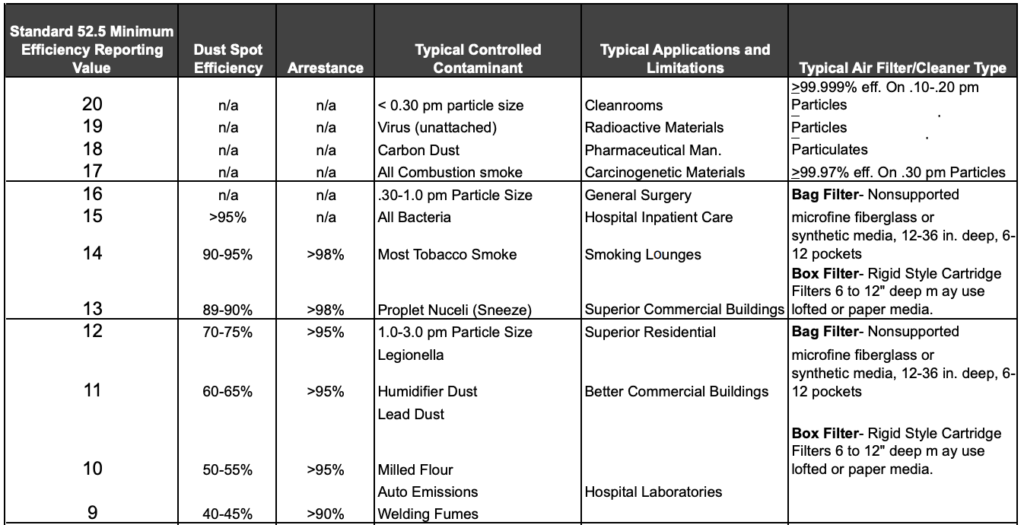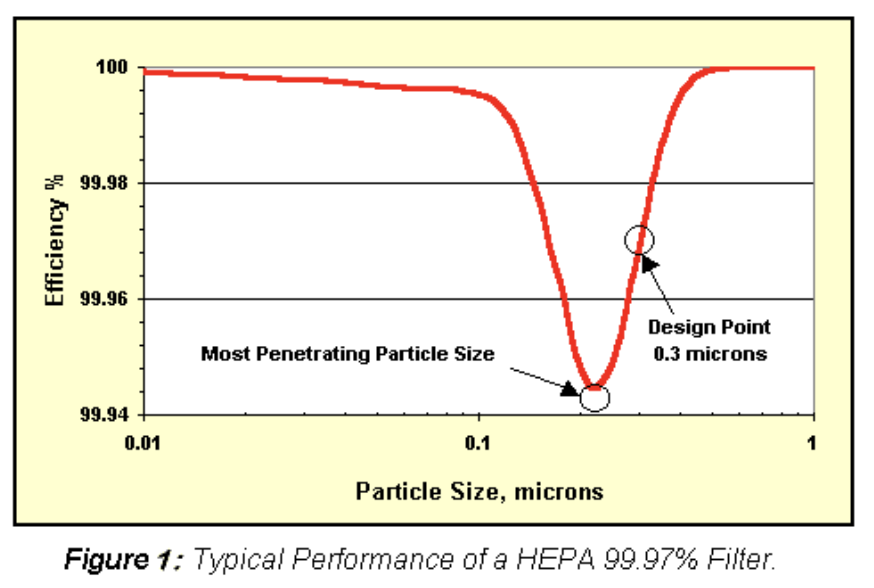The COVID-19 pandemic will have a long-term impact on how we interact with people in many ways. One of those impacts will be on how we circulate and filter the air in common spaces such as offices and retail outlets. Until now, indoor air standards have been based primarily on thermal comfort with some attention to outside air exchange rates for improved air quality. I envision that future standards will require greater circulation rates, higher outside air exchange rates and higher standards for air filtration. In this article, I want to review the current air filtration technology that we have available that could be incorporated into future standards and how we as ventilation system specialists will incorporate air filtration into ventilation system designs.
Air Filtration Technology
Our current air filtration technology is based on ratings related to removing a certain sized particle with a certain efficiency. The most common air filtration ratings that we hear discussed are MERV and HEPA. MERV stands for Minimum Efficiency Reporting Value. The ratings for MERV filters range from 1 to 20 with the higher number meaning that the filter can eliminate smaller particles with a higher efficiency. Below is a portion of a MERV rating chart.

The chart is useful for determining the filtration level that is needed to attain the desired level of clean air. Anyone that has purchased a filter for their house has seen the different MERV level filters that are available for residential use.
HEPA stands for High Efficiency Particulate Air. HEPA is a designation used to describe filters that are able to trap 99.97 percent of particles that are 0.3 microns. HEPA filters are also considered to be MERV 17-20 rated filters. The HEPA standard was created to focus on the filtration efficiency for filtering particles that are 0.3 microns. Although the standard focuses on 0.3 micron sized particles, the chart below shows that HEPA filters are highly efficient at trapping larger and smaller particles.

You may be wondering if a HEPA filter will capture the COVID-19 virus. It is thought that a single COVID-19 virus molecule is around 0.125 microns. When a person expels moisture containing the virus through the mouth or nose, the smallest droplet size is considered to be around 5 microns. The answer is that a HEPA filter can capture the COVID-19 virus with a high degree of efficiency whether it is by itself or contained in a water droplet. However, without enough air circulation, the virus may not make it to the HEPA filter before landing on a surface. That is why hospital operating rooms have air changes rates of 100 times or more. Therefore, any change in indoor air quality standards to incorporate higher filtration standards will also need to increase the air circulation rates in order to be effective at capturing viruses.
Air Filtration Impacts on Ventilation System Design
The first impact of adding air filtration to a ventilation system is greater static pressure. Let’s assume we are adding a HEPA filter to the return air of our ventilation system. The additional pressure drop of a clean HEPA filter is between 0.2 and 0.4 in w.g. depending on the filter thickness. Because HEPA filters are expensive, most applications will use a prefilter, to add filter life to the HEPA, will add additional pressure drop. Also, as the prefilter and HEPA filters become loaded with particles, the total static pressure drop will increase. After determining the total design pressure drop considering all of the pressure drop loads, we can determine if the existing return air fan can handle the additional load or if it needs to be upgraded.
The second impact is the air velocity at the filter face. This will determine the surface area requirement of the HEPA filter and the size of the filter housing. Most HEPA filters function best at low air velocities. Let’s assume the required air flow is 1000 CFM and the HEPA filter manufacturer recommends a 250 FPM face speed. For this application we would need 4 square feet of filter face which can be provided by a 2’ x 2’ HEPA filter in a flat bank filter housing. However, if the air flow requirement is 10,000 CFM and we need 40 square feet of filter area, we would need to use 10 filters in a v-bank housing to conserve space.
Conclusions
Adding air filtration to a ventilation system can improve indoor air quality. If you are looking for guidance on what level is appropriate for your indoor environment, the MERV rating chart is a good source. However, the design considerations for retrofitting an existing ventilation system requires determining if the existing fan can handle the additional pressure drop and whether there is sufficient space to accommodate the filter housing. If you need assistance with improving the air filtration for your indoor environment, contact Eldridge. Our ventilation specialists have the experience to create a successful environment for your application.
